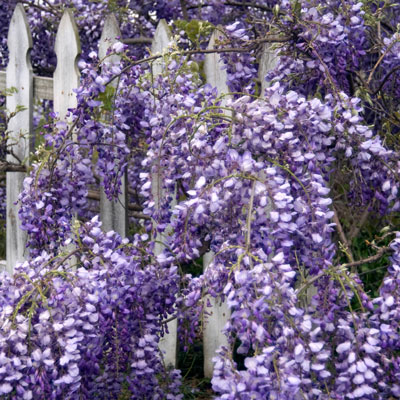Question of the Week: March 4, 2021
“Why doesn’t my wisteria bloom? It was in full flower when I bought it, and it hasn’t bloomed since.”
I get this question many times every spring, then sporadically through the year. There are several possible reasons.

Possible causes of poor flower development…
• Sunlight. Wisterias will tolerate a bit of afternoon shade, but their best blooms will always be when they’re grown in full, or nearly full, sun.
• Soil. Wisterias do best in deep, well-draining and highly organic soils. Because of their need for higher levels of soluble iron, wisterias are least satisfied with the shallow, alkaline, chalky soils that generally parallel Interstate 35 clear across Texas. Put in other terms, the farther west you go in Texas, the more challenging wisterias are. But that doesn’t keep us from trying to grow them.
• Pruning. Any trimming you do to wisterias should be done immediately after they flower (or should have bloomed) in the spring. That gives them the rest of the spring and summer to grow new stems on which the following year’s flower buds will begin to form in September. Do not prune them from fall through that flowering time. Winter is a normal time for pruning woody plants, and many people make this mistake.
• Maybe the mother plant didn’t bloom, either. Perhaps the plant from which your wisteria was propagated was a poor bloomer, and that trait could have been handed down via cuttings. I said that to a wholesale grower once, and he said, “Neil, why would we ever take cuttings from a wisteria that didn’t bloom?” That made sense to me, so I doubt if that is the cause.
The solution? Correct any management errors. And try root-pruning your plant in early September. Use a sharpshooter spade to cut a slit 18 inches out from the trunk and all the way around. By cutting the lateral roots, you may shock the plant into setting flower buds for the following spring. It might help. It can’t hurt.
